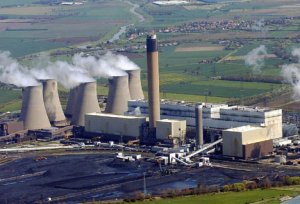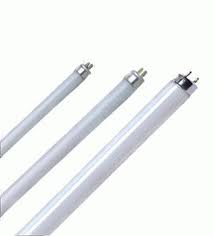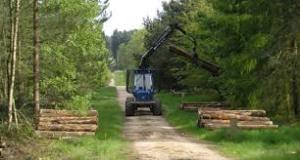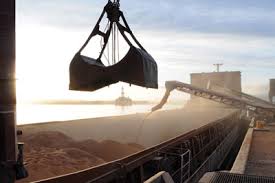Biomass a Pain in the *ss or …..
a proven way to reduce carbon emissions?
As you might realise from previous blogs I have some experience of the practical use of Biomass and I think I’ve therefore had the chance to develop a realistic view of the practicality of the use of Biomass
The Case For
Biomass (in the form of dead sticks and leaves) was very probably the first form of fuel used by Man for controllable heating (too cold; put another log on the fire, too hot; let it die down a bit) so we have considerable experience in it’s use. It is generally reckoned to be carbon neutral in that the “temporarily sequestered” carbon released when it is burned was absorbed from the atmosphere during the growth phase. (Not strictly true but see later) It is convenient in that it can be stored for long periods and heat can be produced exactly when demanded.
The Case Against
Biomass is a pain in the *ss! As other sources of heat/energy became available in the ‘civilised’ world we generally moved away from wood and other biomass to initially coal and oil and more latterly gas and other renewables.
Why?
Well, wood and biomass are awkward and bulky to collect, difficult to handle and do have a limited storage life whereas fossil fuels such as coal and oil can be extracted in bulk, stored almost indefinitely in bulk and handled in bulk. Gas and renewables are potentially even more convenient.
Handling of biomass can be inconvenient requiring large silos/hoppers, unreliable sweep arms and augers which break and block with an annoying frequency.
We have become accustomed to reliable, convenient heat on demand gas (and oil) boilers that either automatically ignite or have an insignificant pilot light constantly running and which provide heat very quickly indeed. While solid fuel boilers don’t do that, (that’s why coal fired power stations spend long periods fired up but off demand waiting to supply power surges) wood boilers sometimes require manual ignition or when they have automatic ignition they take a considerable time to come up to operating temperature, not exactly convenient for intermittent use in a building!
One of the reasons gas became more popular than the cheaper coal in commercial heating is that medium/large coal boilers virtually required the permanent attention of a dedicated boilerman to ensure that the fuel fed in properly, ash was removed and the boiler internals cleaned regularly. Now wood boilers, especially wood pellet are not QUITE as bad. Their automatic feeds are usually reliable, they produce much less ash but, if used intermittantly they can produce large volumes of tar in their flueways which can be a significant cleaning task, however if the boilers can fire and remain at temperature for long periods of time (several weeks) this should not be a problem.
The zero carbon credentials of biomass are also able to be disputed. While it is true that the carbon contained in biomass was absorbed during it’s growth there will be carbon associated with the machinery used to harvest the fuel, process it and transport it (this is obviously a significant issue if wood burnt in the UK was originally grown in Canada!)
So, on balance, would I want to be involved in using biomass to heat a commercial building again? Well, the answer is a qualified yes. I would want to ensure that the plant was appropriatly sized, (see ‘Big Is Better’) I would want to know that the fuel was locally sourced. I would want to ensure that the fuel handling system was well designed and simple and finally I would want to be sure that we could use the boiler for long enough to ensure that our maintenance problems were limited.
I’m Sorry but You’re Wrong!
A statement I’ve had to make a number of times in the past to people in error but with the best of intentions. There are a number of fallacies in relation to energy management that are widespread and often believed to be the gospel truth.
The first (and perhaps the most obviously false) relates to fluorescent tubes. It is widely believed that the energy used to turn on tube is the equivalent of long period of usage (often hours) – well that just isn’t true! A chat with a friendly electrician would soon make obvious the point that were the fallacy true the “inrush current” required to use that amount of energy in the few seconds it tkes for tube to come to full light would blow the fuses! To get technical a 5ft T5 fluorescent takes 800 Joules to “light” – which sounds a lot until you realise that a Watt is 1 Joule per second so a 50W tube uses 50×60 Joules per minute (3000J) – so the extra energy relates to about 20 second of use!
 There was a nugget of truth in that for early tubes the act of turning them on did significantly shorten their lifespan but that is no longer true (Apparently you’d have to turn a T5 on and off round a dozen times a hour to make a difference – if you have the time to do that – GET A LIFE!) and if you have older where it is true please wear them out so they can be replaced with more efficient units.
There was a nugget of truth in that for early tubes the act of turning them on did significantly shorten their lifespan but that is no longer true (Apparently you’d have to turn a T5 on and off round a dozen times a hour to make a difference – if you have the time to do that – GET A LIFE!) and if you have older where it is true please wear them out so they can be replaced with more efficient units.
The second fallacy is one that I hear from heating engineers (especially those that work for gas supply companies -cynically I wonder why?) , who are known to advise customers that the most efficient way to operate a building’s heating is to keep the building heated all the time. The logic apparently is that it takes more energy to heat a building’s fabric back to occupancy level after it has been allowed to cool than it does to replace the heat lost to the outside while it is kept heated. Pardon? Where is this extra heat supposed to go? The heat that goes into the fabric must balance the heat that was lost to outside and obviously the colder the building is the less heat is lost….
There is the efficiency of the boiler plant to consider (which can be a complicated question) but as boilers are at their most efficient at their design load (and a good control system will make sure the boiler operates at that point) that probably supports the “turn it off” argument.
What is true is that if the boiler plant is undersized or the building poorly insulated (or draughtproofed) keeping the heating on will maintain comfort levels better during the period of occupation as it is possible that the heating will be unable to get the building back to temperature from cold in extreme weather. But it will use a lot more energy than if it is allowed to cool when not occupied.
The last example is rather specific and relates to a site so secret that I won’t mention it’s name or the Moor on which it resides (but you will have heard of it).
That site had a need for high levels of very secure electrical supply and therefore had gas turbines (powered by either mains gas or stored oil in case of war) generating its power. When I arrived on site I was struck by how hot the rooms were and that people were (even with an energy manager visiting) unashamedly opening windows to cool down in winter. ” It’s all right, the GT’s produce a lot of waste heat and that is collected and used to heat us” (In other words it was a power led Combined Heat and Power system).
The only problem was when I investigated (and this maybe should have been in “What’s the Value in Value Engineering?”) as a cost cutting exercise the waste heat boilers had been omitted and the heating was provided by the gas boilers installed as back up….
Why not working 9 to 5 is damaging the Planet
 Dolly Parton (and Sheena Easton) had hit records with the song “9 to 5” bemoaning the lot of office workers required to be at their desks for those prescribed hours. Well that used to be the standard office hours throughout the West for many years but thing have changed and the concept of “flexible hours” has become close to universal. This is generally seen as beneficial as it give greater freedom to the workers, more availability to customers and added benefits like reduced travel congestion, increased utilisation of assets and apparent increase in resource. Additionally companies operating internationally gain more overlap between time zones enabling better communication and cooperation. (I well remember working late in a Glasgow office and answering a phone call from the American Head Office at 8pm local time and them being surprised that the person they wanted had left – and Americans have time zones within their own country!).
Dolly Parton (and Sheena Easton) had hit records with the song “9 to 5” bemoaning the lot of office workers required to be at their desks for those prescribed hours. Well that used to be the standard office hours throughout the West for many years but thing have changed and the concept of “flexible hours” has become close to universal. This is generally seen as beneficial as it give greater freedom to the workers, more availability to customers and added benefits like reduced travel congestion, increased utilisation of assets and apparent increase in resource. Additionally companies operating internationally gain more overlap between time zones enabling better communication and cooperation. (I well remember working late in a Glasgow office and answering a phone call from the American Head Office at 8pm local time and them being surprised that the person they wanted had left – and Americans have time zones within their own country!).
Increasingly businesses are operating longer and longer hours – and the latest disputes on the London Underground as it prepares for overnight operation show this trend is likely to continue.
But have you considered the effect this has on energy consumption? When buildings were only occupied from 9 to 5 the heating and air-conditioning could (usually) come on around 8am and go off at 5pm (at the latest). Now with occupation from 7:30 am to possibly 10pm the system will need to be energised from 6:30 am to 10pm or so. That means 9 hours becomes 15½ hours -over a 70% increase! and that doesn’t take into account the tendency to work at weekends.
Now the technical amongst you will realise that 70% increase in hours doesn’t mean a 70% increase in energy consumption due to the high proportion required to initially bring the building into a condition for occupation from its rest state and obviously good control strategy like optimum start and finish will have an effect. But because the extended hours will generally have colder exterior temperatures (and hence higher heat loss) the extra usage will be more than you might expect. To add to that because there will be more hours of darkness the lighting load on a well controlled building will be MUCH greater.
 Now because the extension of operating hours is a commercial decision involving a lot of factors most energy and sustainability managers will have little influence but they should at least try to have their voice heard and the energy and carbon implications included in the calculation.
Now because the extension of operating hours is a commercial decision involving a lot of factors most energy and sustainability managers will have little influence but they should at least try to have their voice heard and the energy and carbon implications included in the calculation.
Perhaps when HMG are considering increasing Sunday trading hours they should consider the effect on their Climate Change Policy?
first published on edie.net
Going Home for Christmas
 At this time of year lots of buildings get effectively closed for the holiday season, however often the building owners don’t respond properly and reduce the building to minimum energy consumption. Too often heating systems are left on and not even reduced to frost protection levels –effectively increasing the usage by something like 70% over the level needed to protect the building and its contents from damage. (on the other hand a few years ago the Army closed a number of its barracks completely over the Christmas/New Year period as a cost saving measure and even drained down the heating and water systems so that the heating could be completely turned off – probably a bit excessive for most buildings).
At this time of year lots of buildings get effectively closed for the holiday season, however often the building owners don’t respond properly and reduce the building to minimum energy consumption. Too often heating systems are left on and not even reduced to frost protection levels –effectively increasing the usage by something like 70% over the level needed to protect the building and its contents from damage. (on the other hand a few years ago the Army closed a number of its barracks completely over the Christmas/New Year period as a cost saving measure and even drained down the heating and water systems so that the heating could be completely turned off – probably a bit excessive for most buildings).
Often lighting systems (and external lights especially) are left to turn on –with no-one present. I’ve often commented that one of my tests of how well a building is managed is to look for external lights on when not needed -especially in bright sunlight
I’ve often commented that one of my tests of how well a building is managed is to look for external lights on when not needed -especially in bright sunlight
In the MOD the official policy was that all computer equipment should be turned off at the plug when not in use – not primarily an energy saving measure but intended to reduce the risk of “spies” hacking in and discovering “secrets”.  Now I know that was mostly ignored because people weren’t willing to crawl under desks to get to the plug each night but even a turned off (but plugged in) computer or printer will use some energy in the primary of its transformer.
Now I know that was mostly ignored because people weren’t willing to crawl under desks to get to the plug each night but even a turned off (but plugged in) computer or printer will use some energy in the primary of its transformer.
If you look around most buildings when empty you will see a lot of equipment that is normally left on, computers, printer, photocopiers, microwave ovens, hot water (tea) boilers, fans, phone chargers (1kg of carbon a week apparently even when not in use but plugged in) whiteboards, sound systems –a long list and nowhere near complete.  Now I would always advocate turning them off but It’s probably not worth the effort to turn off every night (I’m not stopping the willing)but if a building is going to be empty and the equipment not in use for some time (often 14 days at this time of year) making the extra effort becomes sensible to reduce energy usage (it will also have a beneficial effect on the life of the transformer as there is no risk of it overheating under no load (which can happen)).
Now I would always advocate turning them off but It’s probably not worth the effort to turn off every night (I’m not stopping the willing)but if a building is going to be empty and the equipment not in use for some time (often 14 days at this time of year) making the extra effort becomes sensible to reduce energy usage (it will also have a beneficial effect on the life of the transformer as there is no risk of it overheating under no load (which can happen)).
Now one of my ex-colleagues (I know he reads this blog so we’ll see if he comments) was so effective and reducing this “baseload” usage over the Christmas period that the electricity supplier thought the meter had failed, “interpolated” extra consumption and arranged for the meter to be replaced!
Oleum Serpentes?
 A few weeks ago (while I was independent) I was approached (after speaking at ESTA) by someone who claimed to have a breakthrough in energy management -an additive that when added to the water in a heating system improves its efficiency by a significant amount.
A few weeks ago (while I was independent) I was approached (after speaking at ESTA) by someone who claimed to have a breakthrough in energy management -an additive that when added to the water in a heating system improves its efficiency by a significant amount.
I began to read the details he gave me – a whole lot of technobabble about lipids breaking the surface tension of the water and thereby improving the heat transfer through the metal of the boiler and the heat emitters and claims of significant savings as a result.
Now the chemist in me saw some of the claims as breaking the 1st Law of Thermodynamics, the engineer thought some of the claims unfeasible and the business man remembered the story I told in my blog “Pyramid Power”.
So I politely walked away fairly sure that I wasn’t passing up a major opportunity.
Now something similar has appeared in my life and I find myself quoting Scotty “You canna change the Laws of Physics” but in the spirit of objectivity I keep also remembering how Scotty, Geordie and Miles have deftly sidestepped the laws when needed. (Imagine that an energy blog quoting Star Trek -nerds all!).
It is clear that, whatever anyone claims, you can’t get more out than you put in (even the 230% efficient Led I mentioned in “is there an Led Fallacy” finds the extra energy somewhere -ambient heat absorption I understand) and in fact this product (and I suspect there are more than one on the market that make similar claims) doesn’t actually seem to, they seem to only claim better heat transfer.
Now among “suspicious” (my word) 1 month test periods (which seem to coincide with periods where one would expect consumption to reduce anyway) they describe an experiment conducted by a PhD student from a UK university. They put an electric immersion heater into a waterbath (no details but presumably open topped) and measured the time taken to get from ambient to 85C and claimed that because it was quicker to heat up with their product there was an efficiency gain. The trouble is, if their product does what they claim, it should improve the rate of heat transfer through the walls of the tank and take LONGER to reach the required temperature.  So the experiment demonstrates exactly the opposite effect to that they claim!
So the experiment demonstrates exactly the opposite effect to that they claim!
Consultation with my friend and fellow UK Association Of Energy Engineers Board member Vilnis Vesma (he has a whole article at http://www.vesma.com/downloads/op_treatment_savings.pdf pointing out the theoretical limitations of such additives and has developed a line in debunking claims for energy saving products that don’t work) caused us to realise how the change in heat up rate may have occurred.
1) the oil may well have formed a layer on the surface and acted like the liquid covers you can get for swimming pools designed to reduce evaporation and hold more heat into the pool.
2) Vilnis noticed that “suspiciously” (his word) the clean water test “stalled” soon after the experiment started with no significant rise in temperature for a while. I realised that that might actually be a real effect. It is possible that fresh water was used and the application of heat caused it to “outgas” and form a bubble around the electrode insulating it from the bulk of the liquid – and of course that bubble probably detached and carried a significant amount of heat out of the system. If they’d repeated the test with water that had been previously heated it would have already lost its dissolved gas and would have behaved differently.
Shows the need for a well designed experimental methodology and reproduceability of results. Again I point out that “If it looks too good to be true – is probably is !” -oh and the title of this blog “Snake Oil” in latin (more or less Read More…
Read More…
Conviction vs Compulsion
 I’ve been sometimes asked which I prefer – giving end users control of their local energy use (and encouraging them to be frugal) or taking it into central control. And as usual with me the answer is “it depends”.
I’ve been sometimes asked which I prefer – giving end users control of their local energy use (and encouraging them to be frugal) or taking it into central control. And as usual with me the answer is “it depends”.
Local control gives the occupants the opportunity to react to local conditions and take positive steps to (for example) turn off lights when the sun is providing enough light for the task they are doing (automatic controls can –see “But it is saving energy”- react quickly to changing ambient light and increase or decrease illumination but they can’t understand what sort of work is going on and will assume that the most detailed (and hence most well lit) task is always happening). However they have a nasty habit of forgetting to do so and leaving lights on that aren’t needed (some have, on a positive note, been known to sit in the dark when taking phone calls or working on the computer but I’m not sure if that is good for their long term eyesight). People also have a habit (and I’m guilty as well) of wanting to be warmer than standard when they arrive in on cold days and cooler on warm ones ( I have often said that building occupants want 23C in Winter and 17C in Summer and if we could get that the other way around we’d save an awful lot of energy!) This means that systems are often adjusted to rapidly heat up or cool down rooms when they are first occupied. Anyone who understands the physics of boilers and Air Conditioning units will realise that these rapid changes of settings can easily place the plant into its least efficient range of performance (this is especially true of AC and Heat Pumps where the Laws of Physics can legislate against wide difference in temperature between the hot and cold sides but I understand some control systems are designed to keep units in the efficient range despite changes made to settings)
On the other hand if you take all control away from the occupiers they feel (like the County Hall staff in “But it is saving Energy”) disempowered and frustrated and potentially resistant to other energy saving measures. But it also true that if the energy manager has total control of all energy using plant he can ensure that it is never operating outside his set parameters (it might not be available when needed but it won’t be wasting energy) and therefore be as frugal as possible.
To add to that building occupants don’t always inform the BMS manager of problems – I’m reminded of the Gurkhas whose heating failed during the coldest part of a Catterick winter and the fact that the water in the flower vases was frozen was only noted when a British Officer inspected (tough men the Gurkhas) and of a DLO Depot where problems with the interface between the BMS and Dehumidification meant they were working at over 25C and less than 10% humidity (the sort of conditions you get in a desert).
On the other hand occupants often have the BMS manager under pressure because they feel too cold or hot (and two individuals in the same room under conditions that you or I might feel comfortable in may one complain of cold and the other of overheat-) I remember a building where adjacent discharge vents were putting in air at 5C and 30C to try to please individuals (I think if the air hadn’t been chilled below dewpoint at intake we might have had a line of fog across the room!).
So it seems the poor BMS manager can’t win, he has the energy manager (which could well be himself) demanding lower energy input, the occupiers demanding –sometimes noisily- their personal ideal conditions and people keeping him in the dark about changes that are needed.
How can he be helped? Well good guidelines for temperature (and ventilation) for the building can be set and agreed with the staff (it will not be possible to please everyone unless they each had their own building!) and once set they become a “Law of the Medes and Persians” which is immutable. A Robust system for making changes to timings etc. can be implemented including ways to check that changes are still appropriate can help a lot.
Absence detection with switches can be included on lights (possibly with automatic dimming and time outs that mean the user has to confirm that they still need the light) meaning that people have to switch on the light when they arrive but when they leave it automatically turns off – giving them control but preventing them wasting by forgetting to turn off when they leave. Add absence detection to air-conditioning and heating in rooms that are intermittently occupied (some hotel groups have systems where unless the room key is in its holder the room gets no heat or power) and we might begin to chip into the syndrome where security guards have to turn off lots of forgotten equipment on their rounds (how much would be saved if it was turned off the moment it wasn’t needed?).
So the tools exist but it is going to be down to the skill of the Energy Manager to choose which ones are most appropriate to each situation – the trouble being that a global answer is bound to upset people on varying sites, so he’ll need to consider micromanaging the specification and change it when personnel change.
Who’d be an Energy Manager?
BMS Blunders IV
At an RAF base with Royal connections (in England so not that one) I came in as Energy Manager for their FM provider. After my usual survey (a few problems but nothing glaring) I asked to look at the BMS – after confessing that they had no-one who knew how to use it thanks to personnel changes and that they were worried I might get them into trouble – they sat me down at the master computer and “volunteered” a keen member of their team to watch me (actually he didn’t take much pressing). Finding the login (actually it was username =Name of the Establishment and Password=Password – I had it changed!) I logged in with some trepidation. OK not too many alarms (pleasantly surprising) and the system clock has the right time AND Day -so not as bad as I expected.Then I turned to the local and asked “Why is this building set to 23C?” “That’s the creche” was the reply. “Then why does it say “Library?”
It turned out that one half of the building was a creche for servicemen/women’s children and the other half was a library. Very different temperature requirements and opening hours but they were one zone on the BMS despite the graphics (rather good) showing that mechanically they were seperated (and even had two sensors).
As they were operating at the high temperature required for toddlers and the library’s long hours rather a lot of energy was being consumed.
A Classic example where a small saving on capital cost results in a significantly greater loss on operating costs – which are repeated through the life of the installation.
And the outcome? The BMS service engineer was due, he put in one new wire (apparently about 2m long) did a bit of reprogramming and one zone became two with the right temperature and hours, the library staff were grateful to be comfortable and my “disciple” set about adjusting the settings for ALL the buildings based on a chart I gave him.
All in all a very effective visit.
Now drawing the four BMS stories together, it is a capable tool but it needs to be correctly engineered, managed and understood if it is to achieve results. and as is often the case in energy a small “saving” on capital can result in considerable long term losses on running costs.
BMS Blunders III
After I moved to Leicestershire one of the things I inherited was a pile of premises’ energy surveys that no-one had had time to analyse let alone act on. I resolved that (without resource to deal with them more proactively) they would become my casual reading when I had a gap between more important tasks.
So across time I noted a premise for better heating controls, others for lighting upgrades, another for insulation work, that sort of thing. Then I came across the report for Mountsorrel depot and was galvanised to action and placed an immediate order for work at the site.
Why was I urged to immediate action, without stopping for a feasibility study, business case or even a quotation as a local authority manager would normally consider standard procedure?
The story the report told (and one was done because the small building was a surprisingly poor performer in energy terms) was compelling. People in the building were generally complaining about overheating but it had a relatively good BMS and the settings were correct. What was the issue?
Well in the survey the location of the temperature sensor was noted as in a busy office near the rear door of the building. Lots of people, lots of equipment, that room soon got warm – in fact too warm. So they opened the door to cool down. Yes that cooled down the sensor as well and it called for more heat , so they opened the door wider … a vicious circle resulting in the entire building overheating and wasting energy by the bucketful.
Now I could have had the door locked (although that might have had safety implications) and the sensor setting lowered (to reduce the initial overheating) but that would have had implications on cooler rooms in the building.
So I immediately instructed that the sensor be moved into another room -with the words I don’t care what it costs, delay is costing money that is greater than the cost, the payback has to be in weeks (it was) get it done (please).
Simples
BMS Blunders Part II
While running the BMS at Catterick another incident happened that provided insight into the operation of the system we got a call from the Energy Warden for a newly returned unit complaining that their accomodation was too cold. Suspecting that the change from Afghanistan to a North Yorkshire winter was the reason we went to the trusty BMS prepared to temporarily increase the temperature to ease their transistion. However we found the reading was 26C!
“No we’re at less than 10C” was the reply. We checked that the boilers were firing (they were) and considered if we might have a sensor failure. The trouble is that those Satchwell sensors either show zero, the temperature of the surface of the sun or minus the temperature of the surface of the sun (as that is below Absolute Zero quite a theoretical feat!) so that wasn’t really probable. While checking that we weren’t inadvertantly reading the wrong sensor we sent the Energy Champion to locate the sensor (he couldn’t and we had to check the installation drawings).
When he found the sensor location all was revealed.
The sensor was inside an NCO’s room and he had (quite against regulations) acquired 2 electric fires and had them burning non-stop. Yes his room was at 26C but because the sensor was satisfied the rest of the building was receiving no heating at all!
His unauthorised heating was confiscated and soon everyone was warm again.
The remaining question (and I’m not sure of the answer) was it true that he appeared on parade the following day with two black eyes caused when his comrades found out why they’d been shivering for the last few days?
BMS Blunders I
Ater a week without a blog due to personal issues I’m starting a set of four to mark NEMEX next week.
A lot of people think Building Management Systems are a major solution to energy management- they are a useful tool but they do need active management if they are to achieve best results – if they are treated as “fit and forget” they might actually cost you energy!
Four stories from my past come to mind;
While I was Catterick Garrison ENMAN my Assistant ENMAN (Steve) took a call from the Garrison Commander on 1st October (the day the army heating season starts in the UK) complaining that the heating wasn’t on in his office. Steve went to (what I’m told was) the largest Satchwell BMS in the UK and replied – “Your office is up to temperature Sir” (he actually had one of the sensors in his office – I wonder why!). The Commander kept insisting that the heating wasn’t on because his radiator was cold.
Time for me to step in,
A quick word with Steve and I picked up my phone and a large bunch of keys and walked to the next building where the Commander had his office. Explaining again I took him to the boiler room and showed him the boiler was alight and that its header circuit was warm and looping on the shortest shunt circuit. I also showed him that the outlet pipework was cold after the control valve.
I picked up my phone “Steve NOW Please!” a short pause and the motorised valve opened and heat flowed towards the building.
I explained to the Commander that Steve had increased the set point for his office above that allowed by the rules (he’d actually done more as he’d had to force an unscheduled update on the outstation, inhibited some of the other sensors and turned off the short-cycling protocol but the Commander didn’t need to know that). We walked back to his office which was already becoming uncomfortably warm and the Commander was convinced that we had control and that actually he didn’t need (or even want) the heating on.
“Steve please put the Commander’s Office back to normal it won’t be dignified if he has to wear shorts and as I can see it from my desk he knows what I’ll say if he opens his window”
and the other stories……watch this space.



